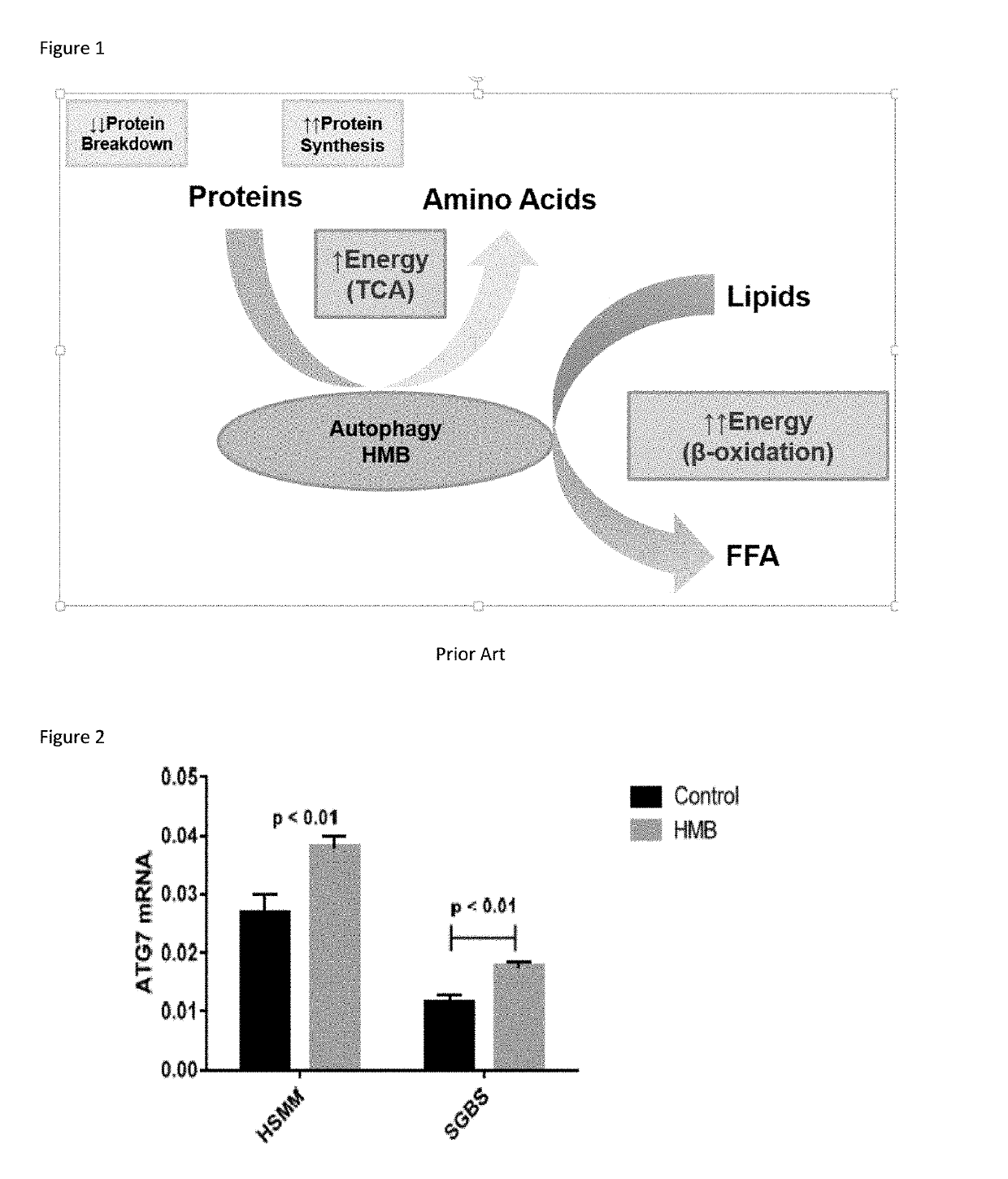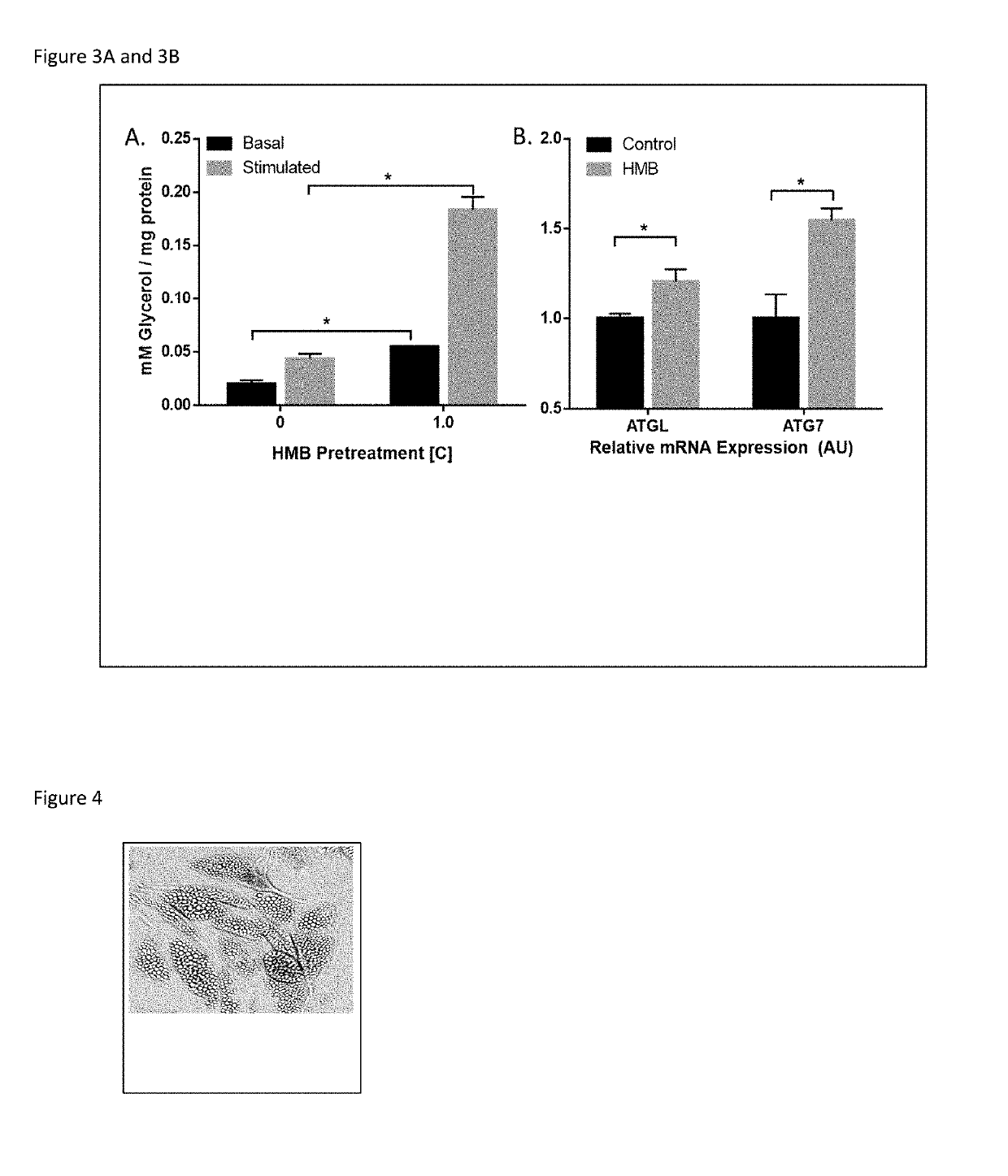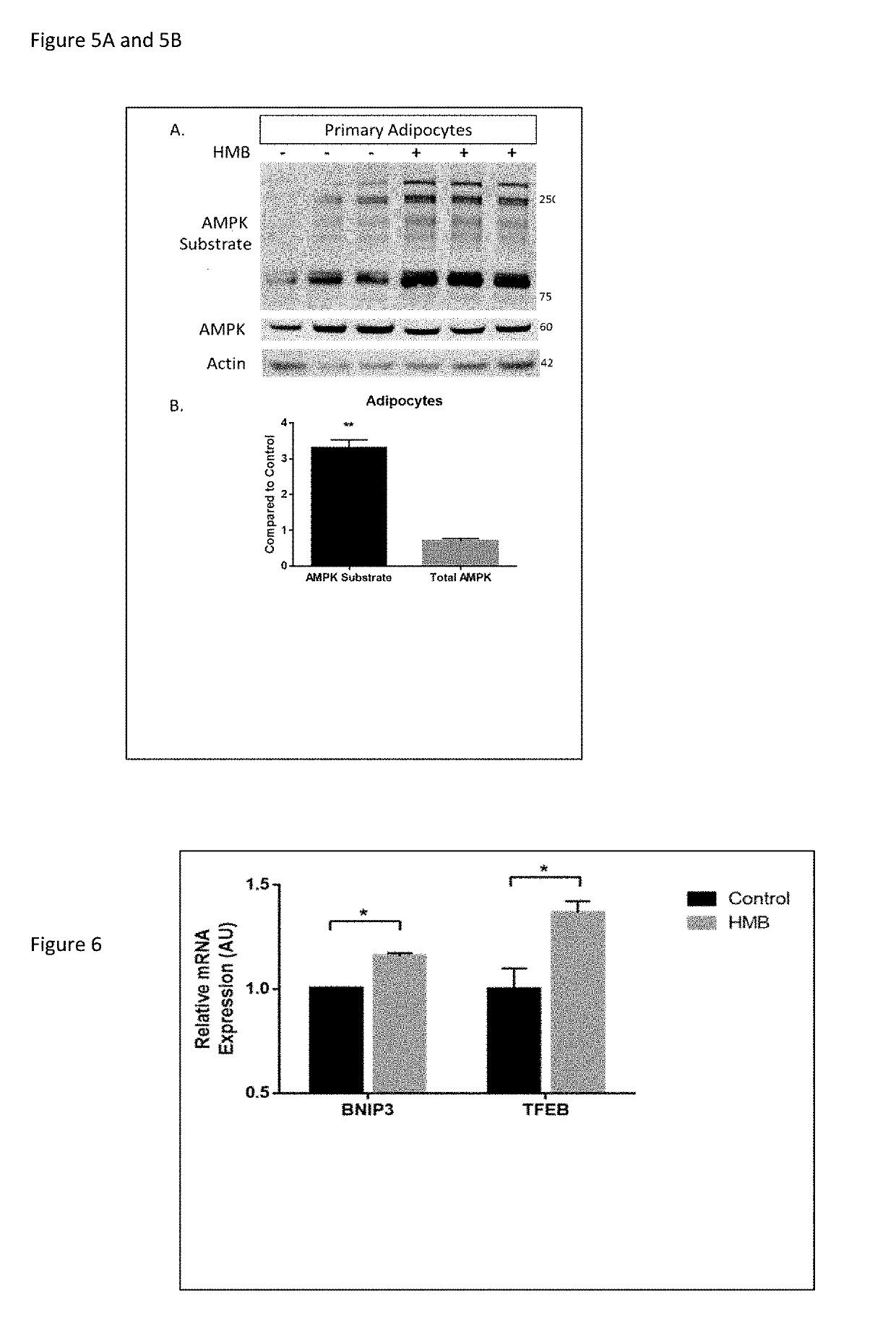Compositions and Methods of Use of Beta-Hydroxy-Beta-Methylbutyrate (HMB) FOR MODULATING AUTOPHAGY AND LIPOPHAGY
a technology of beta-hydroxy-methylbutyrate and lipophagy, which is applied in the field of compositions, can solve the problems of loss of protein quality control, accumulation of intracellular damage, and loss of neuronal death and neurological abnormalities, and achieve the effects of preventing, reducing, inhibiting, and treating or slowing autophagy-related conditions and diseases
- Summary
- Abstract
- Description
- Claims
- Application Information
AI Technical Summary
Benefits of technology
Problems solved by technology
Method used
Image
Examples
experimental examples
[0086]The following examples will illustrate the invention in further detail. It will be readily understood that the composition of the present invention, as generally described and illustrated in the Examples herein, could be synthesized in a variety of formulations and dosage forms. Thus, the following more detailed description of the presently preferred embodiments of the methods, formulations and compositions of the present invention are not intended to limit the scope of the invention, as claimed, but it is merely representative of the presently preferred embodiments of the invention.
[0087]Autophagy in Muscle Cells
[0088]Cultured primary human skeletal muscle cells (HSMM, Lonza) were grown to confluence and differentiated into myotubes. The cells were then supplemented with HMB (1 mM) for 4 days (n=6 for treatment or control groups) with a medium change every other day. Gene expression (mRNA) was determined at the end of the treatment by quantitative polymerase chain reaction (q...
example 1
[0090]Differentiated adipocytes were treated with HMB in regular growth medium for determination of lipolysis and gene expression. The adipocytes were pretreated for 48 hours with 1 mM HMB (n=4), resulting in basal and 1 uM isoproterenol stimulated lipolysis (FIG. 3A). Gene expression of adipose triglyceride lipase (ATGL) and autophagy related protein (ATG7) were significantly increased following 96 hours of treatment (FIG. 3B, n=6) *p<0.05. This indicates that HMB activates not only classical triglyceride lipolysis but also autophagy-mediated mobilization of cellular lipid stores (lipophagy).
example 2
[0091]A line of subcutaneous preadipocytes isolated from normal humans (non-diabetic controls) was used. These cells differentiate well (see FIG. 4) and provide a good in vitro model for studying effects of HMB on lipophagy. The subcutaneous human adipocytes showed efficient lipid droplet accumulation at 14 days post confluence (FIG. 4). Differentiated adipocytes (14 days post confluence) were treated for 4 days with 1 mM HMB supplemented in normal growth medium. Lysates were probed with an antibody (Cell Signal Technologies) directed against AMPK phosphorylated substrates (consensus motif LCRXXpS / pT) to obtain a broad evaluation of AMPK activation and total AMPK levels were also measured. A striking, significant increase in AMPK substrate phosphorylation intensity in adipocytes treated with HMB (FIG. 5) while total AMPK levels were not significantly changed. FIG. 5A shows primary adipocytes treated for 96 hours with 1 mM HMB. The cells were lysed and probed for phosphorylated targe...
PUM
| Property | Measurement | Unit |
|---|---|---|
| weight | aaaaa | aaaaa |
| muscle strength | aaaaa | aaaaa |
| cellular stress | aaaaa | aaaaa |
Abstract
Description
Claims
Application Information
 Login to View More
Login to View More - R&D
- Intellectual Property
- Life Sciences
- Materials
- Tech Scout
- Unparalleled Data Quality
- Higher Quality Content
- 60% Fewer Hallucinations
Browse by: Latest US Patents, China's latest patents, Technical Efficacy Thesaurus, Application Domain, Technology Topic, Popular Technical Reports.
© 2025 PatSnap. All rights reserved.Legal|Privacy policy|Modern Slavery Act Transparency Statement|Sitemap|About US| Contact US: help@patsnap.com



